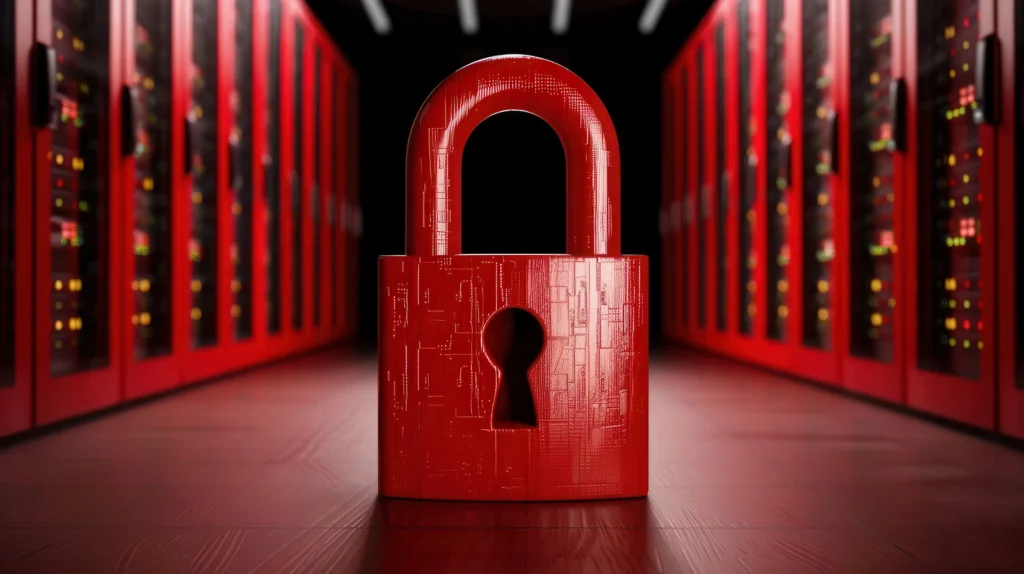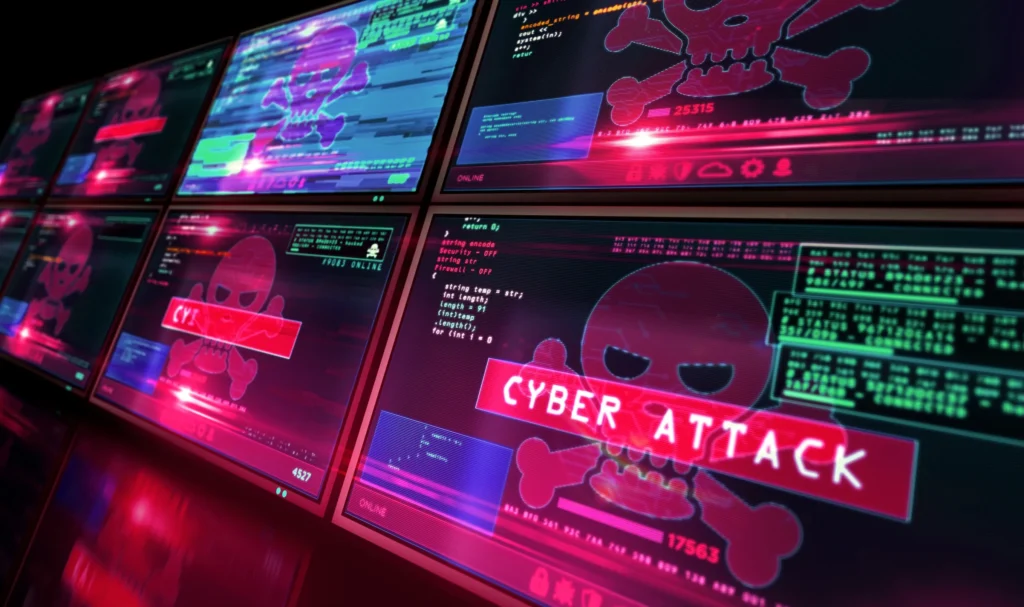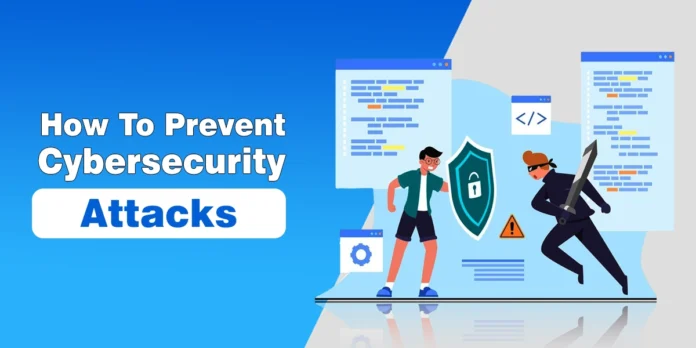Cybersecurity threats are a constant challenge for both businesses and individuals. Without proper protection, sensitive data and everyday operations can become easy targets for hackers.
According to Astra, a cyberattack happens every 39 seconds and the cybercrime is estimated to cost the world $9.5 trillion in 2024.
Thats why, taking some proactive security steps can help lower the chances of attacks and help strengthen overall defenses.
In this blog post, I am going to share some of the best tips to prevent cybersecurity attacks and keep your private data and information safe.
Tips To Prevent Cybersecurity Attacks
Strengthen Password Policies
Weak passwords are a common issue that cybercriminals exploit. A solid password policy helps users create secure and unique passwords that are harder to guess.
Encourage strong passwords that include a mix of uppercase and lowercase letters, numbers, and special symbols. It’s also important to implement multi-factor authentication (MFA). MFA adds an extra step by asking for a code sent to the user’s mobile phone or email. This makes it much harder for unauthorized people to gain access, even if they have the password.

Keep Software and Systems Updated
Outdated software often has weaknesses that hackers can use to their advantage. Updates released by developers often contain fixes for security gaps.
Creating a regular update schedule prevents outdated programs from becoming weak spots. Automatic updates can make sure that important security fixes are applied without delay. Additionally, paying attention to end-of-life software announcements can help big and small businesses alike plan timely replacements and avoid using unsupported versions.
Partner With Trusted Cybersecurity Experts
Working with reliable cybersecurity providers, like IT support Kirkland companies, can improve an organization’s defenses. External specialists offer services like 24/7 monitoring, vulnerability assessments, and incident response support.
Companies that do not have an in-house IT team can benefit from outsourcing security tasks to experienced providers who stay up to date with evolving threats.
Train Employees on Cybersecurity Practices
Many cybersecurity problems occur because of human error. Training employees to recognize phishing scams, fake links, and suspicious emails can prevent costly mistakes.
Good training programs include realistic examples that employees may encounter. Encourage employees to report potential threats and avoid clicking on unknown links or opening unexpected attachments. Remind them to keep their passwords confidential to reduce the risk of internal breaches.
Use Strong Endpoint Protection
Devices like computers, tablets, and smartphones are often targeted by hackers. Using strong endpoint protection software can help stop malware, ransomware, and other cyber threats.
Antivirus software and endpoint detection tools can catch and block threats before they spread. Running regular scans and staying alert for unusual activity can add extra protection for all connected devices.
Separate Networks Into Sections
Network segmentation splits a network into smaller sections to limit how far a cyber attack can spread if a breach occurs. This setup isolates sensitive company and personal information from less critical systems.
For example, if someone gains access to a public section of the network, segmentation prevents them from reaching confidential data. Tools like firewalls and access controls support this approach by restricting movement across different parts of the system.
Conduct Security Audits Regularly
Security audits identify weak spots in a company’s defenses. A detailed audit checks system settings, reviews existing security steps, and points out areas that need improvement.
Hiring independent experts to perform audits can provide fresh insights and uncover hidden issues. Internal reviews help ensure that policies and procedures are being followed. The results of these audits can guide updates to security practices and policies.

Follow Strong Backup Practices
Having reliable backups is crucial for recovering data after an attack. Regular backups ensure that important files can be restored, even if they are encrypted or deleted during a cyberattack.
Storing backups in multiple locations, including off-site and cloud-based storage, can protect data from physical and digital threats. Encrypting backup files adds an extra layer of security to prevent unauthorized access. Testing backups regularly confirms they work properly and can be restored when needed.
Use Intrusion Detection and Prevention Tools
Intrusion detection and prevention systems (IDPS) monitor network traffic for unusual patterns that could signal an attack. If they detect a potential threat, they alert administrators or automatically block unauthorized access.
These tools are especially helpful for spotting new types of cyber threats that can bypass traditional security measures. Combining IDPS with network monitoring tools provides real-time updates on potential breaches.
Control Access Based on Roles
Not every employee needs access to all company systems and data. Role-based access control (RBAC) ensures that users can only access the information they need for their jobs.
For instance, a marketing team member may only need access to campaign files, while IT administrators may need broader access to manage software and hardware. Limiting access prevents unnecessary exposure of sensitive information and lowers the risk of unauthorized actions.
Create an Incident Response Plan
Even with strong security measures, cyber attacks can still happen. A well-prepared incident response plan can reduce the damage if an attack occurs.
The plan should list clear steps to follow when responding to a breach. Key tasks include identifying the cause, containing the threat, and restoring normal business operations. Running practice drills helps ensure that the team can act quickly and efficiently during a real attack.
Encrypt Sensitive Data
Encryption scrambles sensitive data into unreadable code, making it hard for unauthorized users to understand.
Encrypting data, both when it is stored and when it is sent, protects confidential information from being exposed. Secure Socket Layer (SSL) certificates and end-to-end encryption tools are valuable for securing communications and customer data.
Monitor Third-Party Access
Third-party vendors, contractors, and service providers often need access to company systems. However, unmanaged third-party access can create security risks.
Clear guidelines for third-party access and tools to monitor their activities help prevent unauthorized actions. Reviewing and updating third-party permissions regularly ensures that their access remains appropriate and secure.
Implement Physical Security Measures
Although cybersecurity focuses on protecting digital assets, physical security should not be overlooked. Unauthorized physical access to servers, workstations, or network devices can lead to major security breaches.
Simple steps like using secure locks, keycard access, and surveillance cameras can significantly improve physical security. Additionally, server rooms should have restricted access and environmental controls to prevent tampering or damage. Training employees to recognize and report unauthorized physical presence further strengthens this defense.
Conclusion
Preventing cybersecurity attacks requires a proactive approach to applying some cybersecurity best practices. Strengthening password policies, educating employees, and using endpoint protection tools help build a strong defense. Regular updates, security audits, and data backups further reduce vulnerabilities.
By implementing network segmentation, role-based access, and a clear incident response plan, organizations can respond quickly to threats. Combining these measures with expert partnerships and third-party monitoring helps create a safer and more secure environment.

